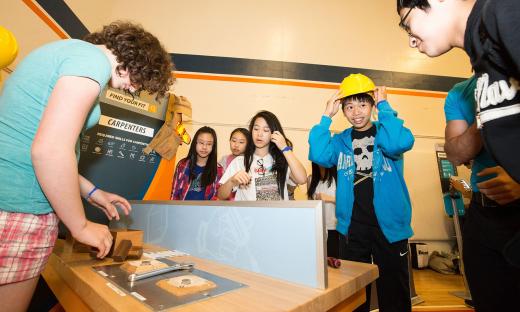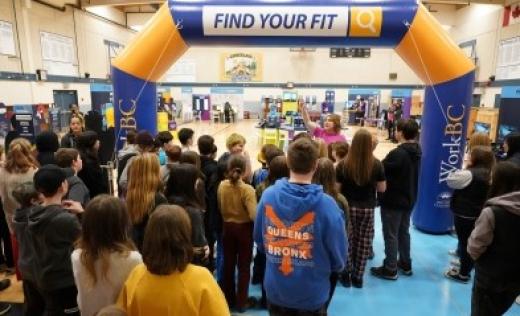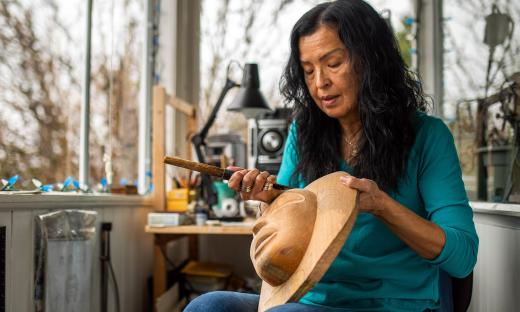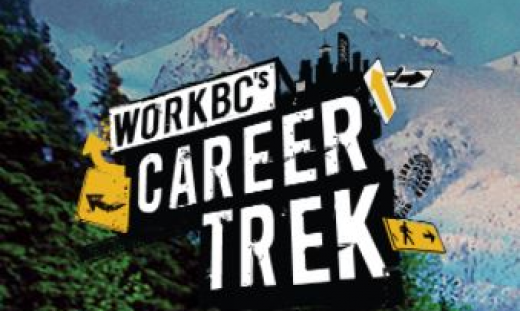This learning activity provides learning experiences that focus on the big ideas and learning standards for Career Education 8 and 9. They relate to: “Career and education paths require ongoing exploration, planning, evaluation, and adaptation.” Learning activities help a student’s quest to strengthen career development competencies, identify and reflect on key job skills and discover information about their prospective careers. As a result, they provide valuable input to help a student with career planning and decision-making.
-
100 KB
-
82 KB
-
178 KB
-
52 KB
-
104 KB
In Career Education 8 and 9, students identify the skills they have developed in school and through experiential learning in the community. Skills will fall under essential career skills (for example: reading, mathematics and document use), employability skills (for example: working with others, leadership and communication) or work skills (for example: critical thinking, co-ordination, monitoring, etc.). Students often gravitate toward course activities and work that will allow them to demonstrate or refine these skills. In the same way, adults often choose careers that allow them to transfer their skill set as they progress along work and learning pathways.
This learning activity is designed so students can identify their own skills, explore careers that use those skills and reflect on the relationship between skills and career goals. Students will create a summary of information about careers that interest them and demonstrate the ability to use this information in their career planning and decision-making.
Worksheets A and B (available for download).
Other Requirements: Access to computer, tablet, smartphone, internet.
- Completed Career Discovery Quizzes.
- Explored WorkBC.ca Career Profiles.
- Identified a personal career choice A and B.
- Did the key skills listed on WorkBC’s Career Trek help you identify a personalized set of skills? Did you record those skills for future career planning and decision-making?
- After viewing the Career Trek videos, which career options most interested you and most closely fit with your own skill set?
- Did you identify a gap in your own skills when considering your preferred career? If so, what actions will you take to develop your skills to meet the job requirements?
- Did some of the new career options that interested you have different skill sets than your own? How would you gain skills for those careers?
- Did you find that some of the same skills showed up in different occupations in the career videos you viewed? Were any of these occupations related or similar enough that someone could transfer these skills from one occupation to the other?
- Did learning about the salary, education requirements and employment outlook make you re-evaluate your career planning?
- Based on viewing the Career Trek videos, will you continue on your career pathway or change your goal? If you think you need to adapt, what will you change?
- Did you update your current career goals or feel you needed to research your career choices further?
- Did you record this information for use when assembling your input for your capstone project?
In Career Education, students will identify the skills they have developed in school and through experiential learning in the community. Skills will fall under essential career skills (for example: reading, mathematics and document use), employability skills (for example: working with others, leadership and communication) or work skills (for example: clerical ability, finger dexterity and being directive).
Students often gravitate toward course activities and work that will allow them to demonstrate or refine these skills. In the same way, adults often choose careers that allow them to transfer their skill set as they progress along work and learning pathways.
This learning activity is designed so students can identify their own skills, explore careers that use those skills and reflect on the relationship between skills and career goals. Students will create a brief summary of information about careers that interest them and demonstrate the ability to use this information in their career planning and decision-making.
- Learn about key job skills using Career Trek videos.
- Assess personal skills against those required for students’ career choices.
- Identify actions to address skill gaps to develop those skills further.
- Learn about careers by investigating fields of work, education requirements and salaries.
- Reflect on career planning and adjust the plan, if required.
- Create a summary of information about occupations that interest the students and demonstrate the ability to use this information in their education and career planning.
This activity introduces students to the key skills that are generally required to be successful when working in a particular career field. These skills can be developed either in school or while working in the community.
- Have students brainstorm in pairs what they know about key job skills, including what they think some key job skills might be and where a person might develop these types of skills.
- Introduce Career Trek videos to the class by showing one career video on the Career Trek Videos page at www.workbc.ca/careertrek. Suggested videos: Respiratory Therapist, Accounting Technician/Bookkeeper, Welder and Human Resources Manager.
- Provide a general overview of what the students will find on this page (for example: an assortment of career videos by industry and skills). Review some of the key skill definitions using Worksheet A related to the occupation you showed them.
- Lead a brief classroom discussion to clarify the concept of “key skills.” Consider using these questions to stimulate discussion:
- Why is it important to develop key skills?
- What key skills are you developing while in school or while working or volunteering in the community?
- Can you identify some of the skills you currently have? Name some.
- Ask each student to identify two careers they are interested in learning about. They may have found the careers through Career Discovery Quizzes, the WorkBC Explore Careers section or through other career research.
- For their two career choices, have students brainstorm and record as many of the required skills as they can. Provide students with some examples:
- Carpenter — critical thinking, co-ordination, monitoring, etc.
- School principal — active listening, writing, critical thinking, etc.
- Ask students to compare their brainstormed list with the list on Worksheet A. If they discover that they missed any key skills, add them to their list.
This learning activity encourages students to watch Career Trek videos to learn more about the key skills required in their preferred career. It’s also an opportunity to learn how their current personal skill set compares. Gaps in personal skills may be identified and students will plan how to develop their skills further.
- Review Activity Two with students, reminding them about the content they can find on the Career Trek Videos page that will support this lesson.
- Present Worksheet A. Ask students to select their personal skills on the My Key Skills list.
- Students can use the worksheet or develop their own way to record the content found on the sheet.
- Ask students to share their answers with a partner to help them identify any skills they may have missed.
- Using Career Trek, introduce the Career Trek video features that students will use for this activity.
- Using the Skills dropdown list, show students that selecting a work skill generates a list of occupations with videos.
- Ask students to choose up to five of the Career Trek skills, one at a time, they personally can demonstrate. From the list generated, ask them to record two occupations of interest on Worksheet A as Career Trek Match 1 and 2. If their previous personal career choices A and B (from prior learning) do not appear on the list, they can add those choices as Personal Career choices 3 and 4.
- Ask students to watch the Career Trek videos relevant to their two occupations. After they watch the videos, ask students to record information about salary, education, employment outlook, field of work and other information that interests them from the View career profile link.
- After viewing their Career Trek videos, suggest students find and watch two more careers of interest, or their two personal career choices 3 and 4. Again, ask them to record information about salary, education, employment outlook, field of work and other information that interests them from the career profile.
- From the career profile, ask them to record more detailed information about the career, as well as additional information such as related careers and examples of recent job openings.
- When this activity is complete, ask students to compare their personal key skill list to the occupations they are interested in. Have them identify where they may have a skill gap and write down the actions they would take to improve their skills. Also, ask them to note skills they have that are applicable to more than one occupation. Discuss the concept of transferable skills with them.
- Once students have identified skill gaps, ask them to share the top two key skills they identified on a poster or white board. Brainstorm ways students can develop these skills further.
Career Trek videos allow students to search for a career of interest by using the Industry filter. This provides an additional lens for exploring careers.
- From the Career Trek Videos page, ask students to select an industry of interest from the Industry dropdown list.
- Ask students to watch several videos generated by this inquiry and record information from the career profile link about field of work, salary, education, employment outlook and information of interest to them.
- Have students share some of their learning with a classmate.
- Ask students to complete the reflection questions as an exit slip.
Self-Assessment
Ask students to provide evidence of the statement:
- I learned about the field of work, salary, education requirements and employment outlook for each career.
- Through this activity I found out about several new occupations and evaluated whether I had the key skills to eventually pursue this work.
- I learned about key skills I need to develop by taking additional courses or gaining more work experience.
- I reflected on whether any of this additional information about the career impacted my career planning or decisions.
- I evaluated my current career plan and made changes if necessary.
Teacher Assessment
Review exit slip to monitor student progress.
This lesson plan supports elements of British Columbia's Career Education Curriculum as outlined below. For further details on the curriculum itself, visit the Ministry of Education's Career Education Curriculum webpage.
Career Education 8-9
- Our career paths reflect the personal, community and educational choices we make.
- Reflecting on our preferences and skills helps us identify the steps we need to take to achieve our career goals.
Career Education 8-9
- Personal development:
- Self-assessment for career research.
- Goal-setting strategies.
- Reflection.
Career Education 8-9
- Examine: Use self-assessment and reflection to develop awareness of our strengths, preferences and skills.
- Experience: Recognize the influence of curriculum choices and co-curricular activities on career paths.
- Initiate: Apply a variety of research skills to expand our knowledge of diverse career possibilities and understand career clusters.
- Initiate: Set and achieve realistic learning goals with perseverance and resilience.
- Communication.
- Critical thinking.
- Creative thinking.








